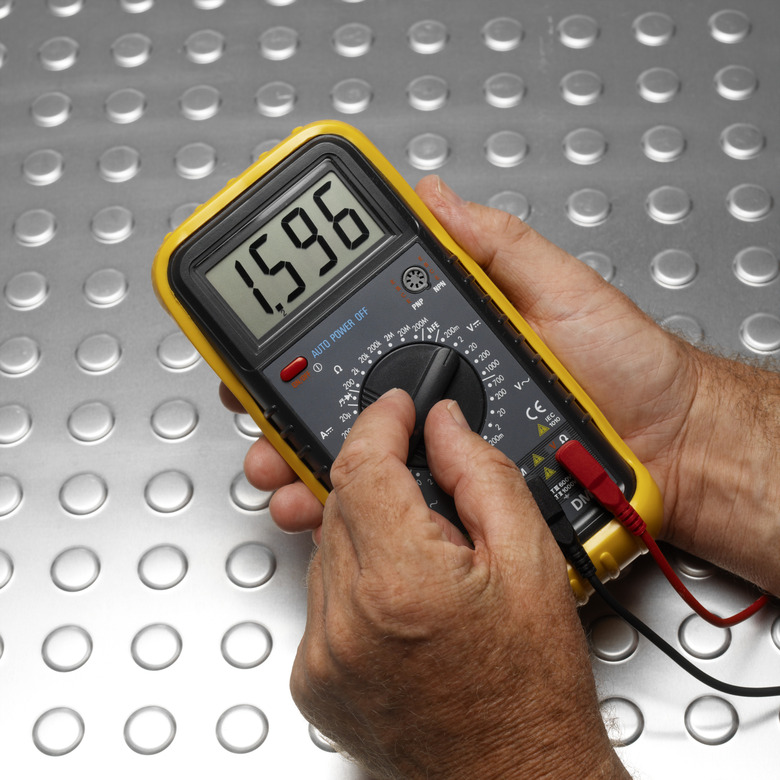How To Increase Amperes
An ampere is a measure of electrical current in a circuit. Two things control the amount of amperes in a circuit: volts and resistance. The equation for calculating amperage is E/R=A, where E is the voltage supplied to a circuit and R is the resistance in the circuit. The flow of water through a pipe is analogous, i.e., voltage is the force that pushes water and resistance is the size of the pipe. When more force is applied, more water flows. The larger the pipe, the less resistance it has, and the more water that will flow. A simple circuit that varies the voltage and resistance demonstrates how to increase the amperes in a circuit.
Step 1
Connect a variable DC power supply to an electronic breadboard.
Step 2
Build a simple circuit connecting a 2000-ohm resistor in series with a red LED, a digital multimeter and the variable power supply. The red LED will act as a test lamp to show that current is flowing.
Step 3
Turn the multimeter selector knob to a milliamperes setting. Turn the power supply on and adjust to 12 volts output. Observe the multimeter current reading. It will read very close to 6 milliamps. It will not be exactly 6 milliamps because the hookup wire and LED add some resistance to the circuit.
Step 4
Increase the voltage output from the power supply to 24 volts. Observe the change in the multimeter current reading. It will read close to 12 milliamps. An increase in the voltage results in an increase in the amperes.
Step 5
Turn off the voltage supply. Replace the 2000-ohm resistor with a 1000-ohm resistor. Turn on the voltage supply and adjust the voltage output to 24 volts. Observe the multimeter current reading. It will read 24 milliamps. A decrease in the resistance results in an increase in the amperes. Therefore, by increasing the voltage in a circuit or by decreasing the resistance in a circuit, the amperes in a circuit will be increased.
Things Needed
- Electrical breadboard
- Variable DC power supply
- Hookup wire
- 1000-ohm resistor
- 2000-ohm resistor
- Digital multimeter
- Red LED
TL;DR (Too Long; Didn't Read)
If the LED fails to light and the current measures zero amperes, it is likely that the LED is connected backwards. LEDs have polarity and must be oriented with the current flow. The longer of the two LED leads is the positive lead. Reverse the LED lead connections and try again.
Warning
A typical LED operates within a range of 6 to 36 milliamps. Increasing the amperage beyond 36 milliamperes in the sample circuit will result in a blown LED.
References
- "Understanding Basic Electronics"; Larry Wolfgang; 2006
- "Teach Yourself Electricity and Electronics"; Stan Gibilisco; 1997
- Science Buddies; Electronics Primer: Using a Multimeter; 2011
Cite This Article
MLA
Boyer, Timothy. "How To Increase Amperes" sciencing.com, https://www.sciencing.com/increase-amperes-8785533/. 24 April 2017.
APA
Boyer, Timothy. (2017, April 24). How To Increase Amperes. sciencing.com. Retrieved from https://www.sciencing.com/increase-amperes-8785533/
Chicago
Boyer, Timothy. How To Increase Amperes last modified March 24, 2022. https://www.sciencing.com/increase-amperes-8785533/
